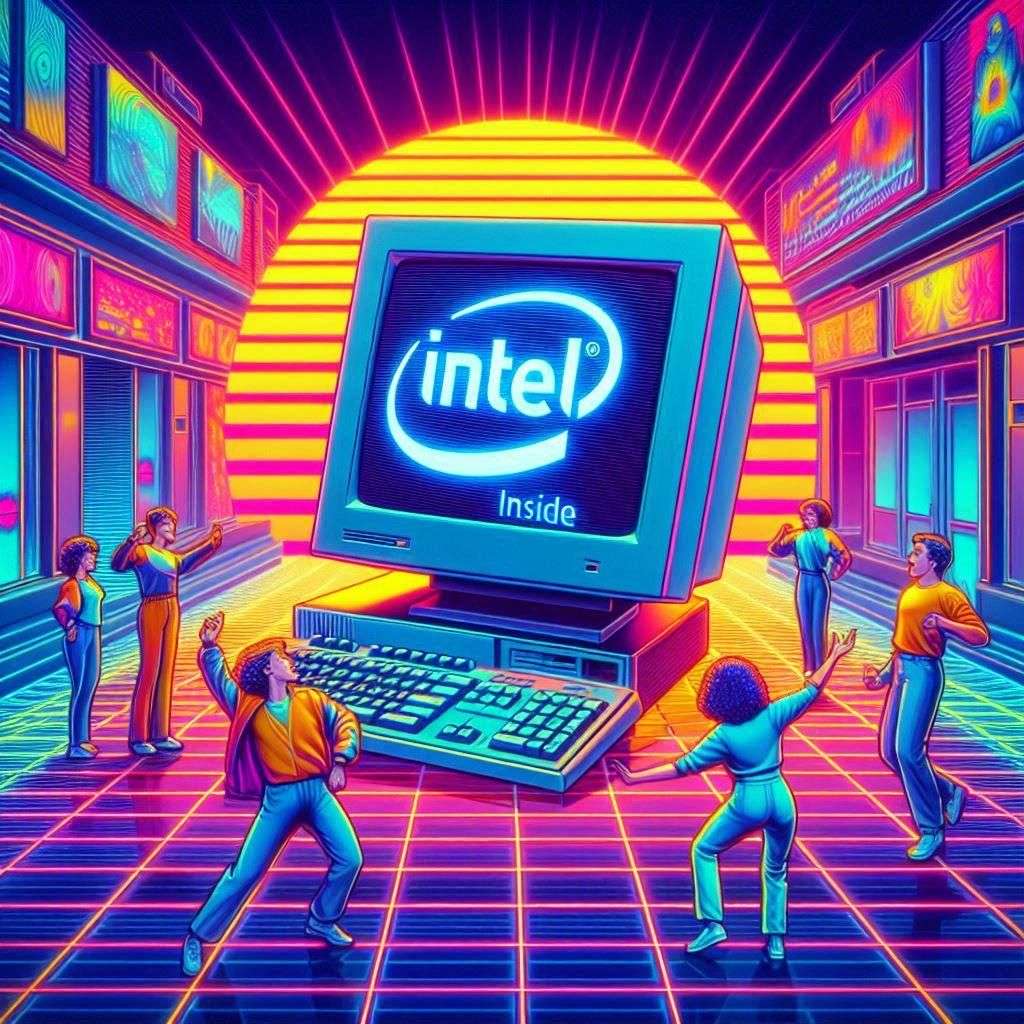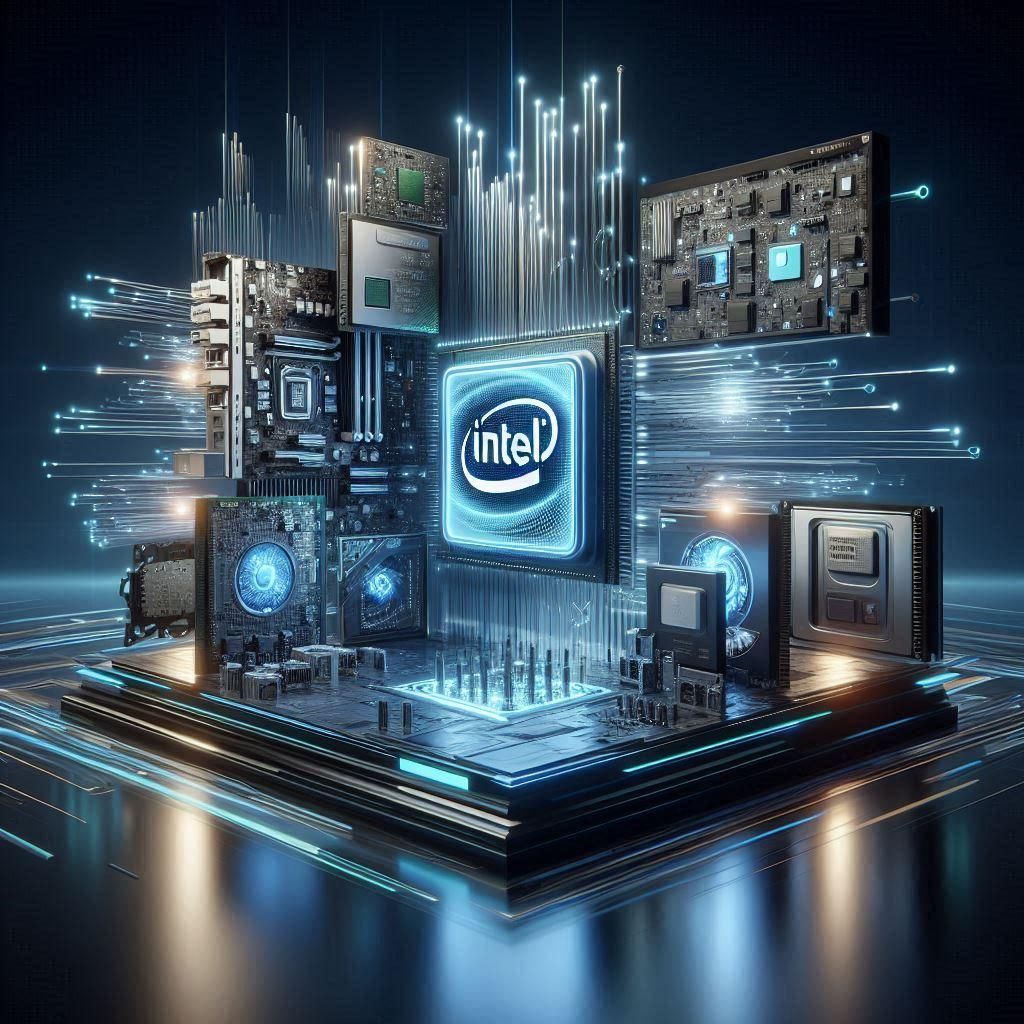Advertisement
Intel, a renowned American technology firm that is famous for its computer chips that are used in most of the world’s computers, is the leading player in the global tech industry.
Intel was founded with the objective of advancing electronics and has its headquarters based in Santa Clara, California. The name of the company comes from “Integrated Electronics," which is reflective of its foundation of seeking the integration of electronic parts into high-tech systems.
The humble beginnings of Intel
Robert Noyce and Gordon Moore were veteran American engineers who had been working in the industry for some time before they founded Intel in July 1968. Intel was not like most start-ups that would begin in a garage somewhere in Silicon Valley.
Instead, Intel had $2,500,000 in startup capital, with Arthur Rock, a leading venture capitalist, to thank for it.
Both Moore and Noyce were well-established names in the technology sector. Noyce served as general manager at Fairchild Semiconductor, where he also co-invented the silicon integrated circuit in 1959. Michael, on the other hand, led the research and development of the same company.
Some years after starting Intel, these two lured a number of their former colleagues from Fairchild, including Andrew Grove, who was born in Hungary but is now an American businessman by nationality.
In the early days of Intel Corporation’s existence, Noyce used to be its chairman and CEO before he handed power over to Moore and later to Grove, driving the company through its formative stages into stability.

Early products and milestones
Intel’s journey began with memory chips, which included the 1101, the planet’s first metal oxide semiconductor (MOS). However, it didn't enjoy commercial success when it was launched.
It then launched the 1103, a groundbreaking one-kilobit dynamic random access memory chip. This was introduced in 1970 and adopted by Honeywall as a replacement for older core memory technology.
This marked the beginning of global DRAM dominance, due to its cost-effectiveness and lower power consumption.
In 1971, Intel went public and launched erasable programmable read-only memory (EPROM), which became their most successful product line until 1985.
Also in that year, Intel developed its first single-chip microprocessor, the 4004 microprocessor, under contract to Nippon Calculating Machine Corporation.
However, not all businesses were flourishing. When Intel acquired Microma with an investment of $15 million in 1972, the venture ended up incurring a $15 million loss by 1978.
Additionally, stiff competition in the DRAM market reduced Intel’s market share from 82.9% to just about 1.3% over a period of ten years, starting from 1974 to 1984.
The late seventies saw Intel completely change focus towards microprocessors, developing such models as the.8008.,.8080., and.8086.
However, IBM chose the 8088. The biggest turning point came when IBM went ahead and picked its first PC model using the above-mentioned processor as well as Microsoft's DOS and operating system.

Advertisement
Intel’s Microprocessor Evolution: From the 80386 to the Itanium 9500
Intel made a significant contribution to microprocessor technology with the release of the 32-bit 80386 chip in 1985. The backward compatibility of this processor ensures that software for older Intel machines will run on new models, thus benefiting PC owners and developers.
In 1993, Intel introduced the Pentium microprocessor, which marked a change from numerical names to trademarked names.
This was the first personal computer chip to use superscalar processing that improved its pace significantly with 3.1 million transistors, compared to its predecessor’s 1.2 million.
In tandem with Microsoft’s Windows 3.x, it helped boost the PC market, creating high-performance PCs for multimedia applications like gaming.
Intel focused its strategy on making each new microprocessor much faster by increasing transistor counts. Cofounder Gordon Moore predicted this exponential growth, which is commonly referred to as Moore’s law.
For example, the first IBM PC had an 8088 chip with about 29K transistors, while later processors had millions or billions of them, such as the Core 2 Quad (800 m) and the Itanium 3.1b. This rapid progression has propelled Intel forward in the microprocessor arena.
Intel's strategic branding and technical challenges
To raise brand awareness, Intel introduced a cooperative advertising program in 1991, through which Intel subsided advertisements on computers that carried the “Intel Inside” label.
Based on the yearly expenditure of computer manufacturers on its chips, Intel gave half of the money used for the company’s print and television commercials. The scheme was expensive for Intel, but it made it a household name.
However, there were problems with Intel’s engineering reputation, including the “Pentium flaw." It was discovered in 1993 that an insignificant mistake had been incorporated into Pentium CPU division operations.
At first, Intel kept quiet about this issue with the intention of rectifying it through updates. However, this glitch was publicized when Thomas Nicely, a mathematician, found it out.
This made IBM decline to ship computers with these affected CPUs and forced Intel to recall them at a cost of $475 million.

Intel's journey from chipmaker to market leader
Intel’s chip manufacturing expanded during the mid-90s to include the design and construction of motherboards. This move allowed Intel to sell over 10 million motherboards by 1995, capturing about 40% of the PC market.
Despite this success, Taiwan-based ASUSTeK surpassed Intel as the leading motherboard manufacturer in the early 21st century.
Throughout the late 20th century, Intel and AMD chips powered nearly every PC except Apple's Macintosh, which used Motorola CPUs.
This changed in 2005 when Apple CEO Steve Jobs announced that future Macs would use Intel CPUs, solidifying Intel's dominance in the PC market.
Intel's leadership saw several changes in the early 21st century. Craig Barrett became CEO in 1998, followed by Paul Otellini in 2005. Jane Shaw served as chairman from 2009 to 2012, succeeded by Andy Bryant.
In 2013, Brian Krzanich took over as CEO, and in 2019, Bob Swan became CEO. Under their leadership, Intel remained a major player in the industry, ranking 43rd on the Fortune 500 list in 2019.
Advertisement





